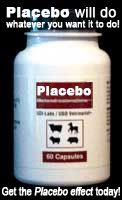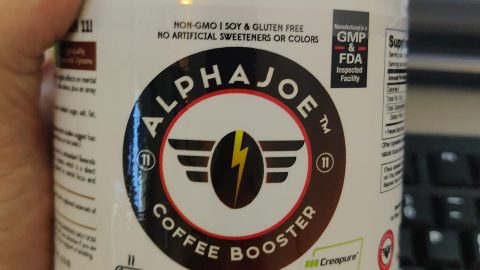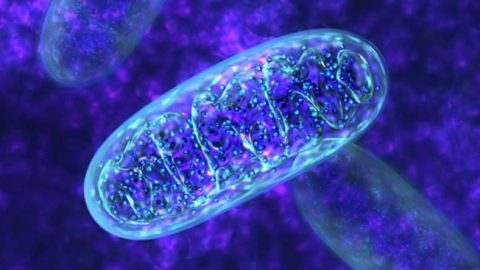If there is one thing that continues to perplex me, it is the disparity between how popular whey protein is (thanks in large part to yours truly) and how much confusion there is regarding this immensely popular supplement. Why are people so confused about whey? I have to conclude that it’s part deceptive advertising by some unscrupulous supplement companies, poorly researched articles put out by self proclaimed “guru” types, and the fact that whey is indeed a complicated protein. In this article I will endeavor to clear it all up once and for all…lift the vale of secrecy, strip away the myths, and shatter the hyperbole surrounding this ultra popular supplement.
By the time you are through reading this article, you will know all you need to know regarding the differences in whey, such as concentrates vs. isolates, micro filtered vs. ion exchange, and many other answers to questions that seem to persist no matter how hard wise-guy writers like me have tried to dispense with all the myths and misinformation/disinformation surrounding whey. Read this article carefully, put it to memory, and you will be the resident whey expert in the gym and amaze your friends at the next cookout if whey becomes a topic of discussion (in which case you go to some boring cookouts!).
What is whey?
When we talk about whey we are actually referring to a complex ingredient made up of protein, lactose, fat and minerals. Protein is the best known component of whey and is made up of many smaller protein subfractions such as: Beta-lactoglobulin, alpha-lactalbumin, immunoglobulins (IgGs), glycomacropeptides, bovine serum albumin (BSA) and minor peptides such as lactoperoxidases, lysozyme and lactoferrin. Each of the subfractions found in whey has its own unique biological properties.
Up until quite recently, separating these subfractions on a large scale was either impossible or prohibitively expensive for anything but research purposes. Modern filtering technology has improved dramatically in the past decade, allowing companies to separate some of the highly bioactive peptides -such as lactoferrin and lactoperoxidase-from whey.
Some of these subfractions are only found in very minute amounts in cow’s milk, normally at less than one percent. For example, although it is one of the most promising subfractions for preventing various diseases, improving immunity and overall health, lactoferrin makes up approximately 0.5% or less of whey protein derived from cow’s milk (whereas human milk protein will contain up to 15% lactoferrin). Over the past few decades, whey protein powders have evolved several generations from low protein concentrates to very high protein isolates.
What’s so great about whey?
Whey protein has become a staple supplement for most bodybuilders and other athletes, and for good reason: it’s a great protein with a wide variety of benefits. Whey has more recently caught on with the anti-aging/longevity-minded groups also.
A growing number of studies has found whey may potentially reduce cancer rates, combat HIV, improve immunity, reduce stress and lower cortisol, increase brain serotonin levels, improve liver function in those suffering from certain forms of hepatitis, reduce blood pressure, and improve performance, to name a few of its potential medical- and sports-related applications. Whey also has an exceptionally high biological value rating and an exceptionally high Branch Chain Amino Acid (BCAA) content.
One of whey’s major effects is its apparent ability to raise glutathione (GSH). The importance of GSH for the proper function of the immune system cannot be overstated. GSH is arguably the most important water-soluble antioxidant found in the body.
The concentration of intracellular GSH is directly related to lymphocyte’s (an important arm of the immune system) reactivity to a challenge, which suggests intracellular GSH levels are one way to modulate immune function. GSH is a tri-peptide made up of the amino acids L-cysteine, L-glutamine and glycine. Of the three, cysteine is the main source of the free sulfhydryl group of GSH and is a limiting factor in the synthesis of GSH (though the effects of whey on GSH is more complicated than simply its cysteine content).
Because GSH is known to be essential to immunity, oxidative stress, and general well being, and because reduced levels of GSH are associated with a long list of diseases, whey has a place in anyone’s nutrition program. Reduced GSH is also associated with over training syndrome (OTS) in athletes, so whey may very well have an application in preventing, or at least mitigating, OTS. Pertaining directly to athletes, some recent studies suggest whey may have direct effects on performance and muscle mass, but this research is preliminary at best. Some studies have found oxidative stress contributes to muscular fatigue, so having higher GSH levels may allow you to train longer and harder, as some recent data suggests.
Different types of whey
Most of the confusion surrounding whey appears to be in understanding the different types of whey: concentrates, isolates, ion exchange, and others. In the following sections, I will attempt to clear it all up for the reader.
Whey Protein Concentrates:
First generation whey protein powders contain as low as 30-40% protein and high amounts of lactose, fat, and undenatured proteins. They are categorized as a whey concentrate and are used mostly by the food industry for baking and other uses. Modern concentrates now contain as high as 70-80% protein with reduced amounts of lactose. This is achieved through ultra-filtration processing, which removes lactose, thus elevating the concentration of protein and fat in the final product. Although much maligned by companies who have invested heavily in marketing isolates, a well made concentrate is still a high quality source of whey protein, though it will contain higher levels of lactose, ash, and fat then an isolate.
The pros and cons of isolates, and the micro filtered vs. ion exchange debate
Whey Protein Isolates (WPIs) generally contain as much as 90-96% protein. Research has found that only whey proteins in their natural undenatured state (i.e. native conformational state) have biological activity. Processing whey protein to remove the lactose, fats, etc. without losing its biological activity takes special care by the manufacturer. Maintaining the natural undenatured state of the protein is essential to its anti-cancer and immune-modulating activity. The protein must be processed under low temperature and/or low acid conditions as not to “denature” the protein. WPIs contain >90% protein content with minimal lactose and virtually no fat.
The advantage of a good WPI is that it contains more protein and less fat, lactose, and ash than concentrates on a gram-for-gram basis. However, it should be clear to the reader by now that whey is far more complicated than simple protein content, and protein content per se is far from the most important factor when deciding which whey to use. For example, ion exchange has the apparent highest protein levels of any isolate.
Does that make it the best choice for an isolate? No, but many companies still push it as the holy grail of whey. Ion exchange is made by taking a concentrate and running it through what is called an ion exchange column to get an “ion exchange whey isolate.” Sounds pretty fancy, but there are serious drawbacks to this method. As mentioned above, whey protein is a complex protein made up of many sub fraction peptides that have their own unique effects on health and immunity. Some of these subfractions are only found in very small amounts. In truth, the subfractions are really what ultimately makes whey the unique protein it is.
Due to the nature of the ion exchange process, the most valuable and health-promoting components are selectively depleted. Though the protein content is increased, many of the most important subfractions are lost or greatly reduced. This makes ion exchange isolates a poor choice for a true third-generation whey protein supplement, though many companies still use it as their isolate source due to the higher protein content. Ion exchange isolates can be as high as 70% or greater of the subfraction Beta-lactoglobulin, (the least interesting and most allergenic subfraction found in whey) with a loss of the more biologically active and interesting subfractions. So, the pros of an ion exchange whey is for those who simply want the very highest protein contents per gram, but the cons are that the higher protein content comes at cost; a loss of many of the subfractions unique to whey. Not an acceptable trade in my view, considering the fact that the actual protein differences between a micro filtered type isolate is minimal from that of an ion exchange.
This segues us nicely into looking at the micro filtered whey isolates. With the array of more recent processing techniques used to make WPIs-or pull out various subfractions -such as Cross Flow Micro filtration (CFM®), ultra filtration (UF), micro filtration (MF), reverse osmosis (RO), dynamic membrane filtration (DMF), ion exchange chromatography, (IEC), electro-ultrafiltration (EU), radial flow chromatography (RFC) and nano filtration (NF), manufacturers can now make some very high grade and unique whey proteins.
Perhaps the most familiar micro filtered isolate to readers would be CFM®*. Although the term “cross flow micro filtered” is something of a generic term for several similar ways of processing whey, The CFM® processing method uses a low temperature micro filtration technique that allows for the production of very high protein contents (>90%), the retention of important subfractions, extremely low fat and lactose contents, with virtually no undenatured proteins. CFM® is a natural, non-chemical process which employs high tech ceramic filters, unlike ion exchange, which involves the use of chemical reagents such as hydrochloric acid and sodium hydroxide. CFM® whey isolate also contains high amounts of calcium and low amounts of sodium.
To sum this section up:
o The pros of ion exchange isolates are extremely low fat and lactose levels, with the highest protein levels (on a gram-for-gram basis). The con-which outweighs the pros in my view-is the loss of important subfractions in favor of higher amounts of Beta-Lac.
o The pros of well-made micro filtered isolates are a high protein content (90% or above), low lactose and fat levels, very low levels of denatured proteins, and the retention of important subfractions in their natural ratios. There really are no cons per se, unless the person wants the additional compounds discussed in the next section.
* = CFM® is a trademark (hence the annoying trade mark symbol next to whenever I write CFM) of Glanbia Nutritionals, a large dairy company based in Ireland with production in the US.
New directions/the future for whey
There are several interesting directions in the development and processing of the next generation of whey proteins.
Bioactive whey fraction protein
A new generation of whey products known as Bioactive Whey Fraction (BAWF) protein is soon to hit the market place, and has the potential to be a worthwhile addition to an athlete’s diet. These new BAWF proteins provide the benefits of high protein levels (>70%) accompanied by greatly increased levels of bioactive health-promoting compounds. This innovative product contains all sorts of interesting compounds not found in significant concentrations in either whey isolates or concentrates. BAWF protein contains far higher total growth factor levels comprised from IGF-1, TGF-ß±, and TGF-ß². It contains much higher levels of various phospholipids and various bioactive lipids, such as conjugated linoleic acid (CLA), phosphotidyl-serine, phosphtidyl-choline, sphingomyelin, and higher levels of immunoglobulins and lactoferrin.
Although data is lacking, studies will likely be completed to demonstrate BAWF protein’s effects related to athletes’ muscle mass or performance. Current studies do suggest these compounds can improve immunity and intestinal health, and have many other effects that both athletes and less active people alike may find beneficial. The differences in the levels of these compounds between this BAWF protein compared to standard concentrates and isolates is not minor. For example when comparing a BAWF protein to a typical concentrate (e.g. WPC 80), the BAWF protein has 350% more lactoferrin, 400% more CLA, 200% more PS more and PC and 150% more IGF as found in the concentrate. The differences are even larger between BAWF protein and an isolate as isolates have only trace amounts of PS, PC, and CLA.
Optimizing subfraction ratios
Another fairly new development in whey processing is the ability to isolate certain bioactive subfraction proteins on a large scale from whey proteins, such as lactoferrin or Glycomacro peptide, using some of the processing methods mentioned above. This was not possible to do on a large scale just a few years ago, but can be done today with modern filtering techniques employed by a small number of companies. This allows for a truly tailored protein supplement; the ability to add back in certain subfractions in amounts that can’t be found in nature. Take for example the subfraction lactoferrin. In many whey products, it is nonexistent due to the type of processing employed. The best whey products will contain less than 1% lactoferrin-and more like 0.5%-of this rare but important micro-fraction. Some companies are now able to add in a specific subfraction to get a truly “designer” protein. One company is also working on making an isolate that will have higher levels of the beneficial subfraction alpha-lactalbumin, and lower levels of the more allergenic and less nutritive subfraction Beta-lactoglobulin. “High alpha-lac” whey isolates would be potentially superior to what is currently on the market in large scale production.
Hydrolyzed proteins make a comeback
Most people remember hydrolyzed proteins were all the rage a few years ago, then dropped off sharply. “Hydrolyzed” basically means the protein has been broken down partially into peptides of different lengths. Because the protein is already partially broken down, it is absorbed faster, which may have positive effects under certain circumstances, and certain metabolic conditions (i.e., burn victims or people with certain digestive disorders and pre-term infants). Whether or not hydrolyzed proteins are truly an advantage to athletes has yet to be proven.
The hype over hydrolyzed proteins was largely based on one rat study that found fasted rats given Hydrolyzed protein had higher nitrogen retention then rats fed whole protein. Human studies have shown that whey peptide-based diets in patients with cancer and crohn’s disease result in enhanced nitrogen retention and utilization. To date, no one has followed up with a human study with healthy athletes showing the same thing.
Regardless, the reason Hydrolyzed protein supplements never became more popular was due to the fact they tasted awful, were expensive, and lacked enough data to really support their use. The way they were produced at the time also denatured the protein heavily. One company has a method for Hydrolyzing whey protein that uses an enzymatic process that tastes OK and does not denature the protein. It also appears to be fairly cost effective. This type of Hydrolyzed whey may have some interesting, albeit poorly researched, applications for bodybuilders and other athletes.
Got milk minerals?
Another potentially useful product to bodybuilders and other athletes is a process for extracting milk minerals from the milk. This yields a highly bio available form of calcium without the fat and lactose of dairy products, and also contains other minerals and nutrients, such as magnesium, phosphorus, potassium, and zinc, needed for optimal bone formation and metabolism. Recent research suggests that higher calcium intakes are associated with lower blood pressure and other positive effects on health.
Most interesting to bodybuilders and other athletes, however, is a growing body of research that has found that higher calcium intake leads to reduced body fat levels and may help shift the metabolism to increased lipolysis (fat breakdown) and decrease lipogenesis (formation of fat). Though bodybuilder types don’t tend to suffer from bone density issues, many may not be getting an optimal intake of calcium to see changes in body fat levels. This new milk mineral product added to various protein formulas might be just what the anabolic doctor ordered for athletes looking to minimize body fat and maximize muscle mass.
Conclusion
Well there you have it. I hope this article finally clears up the major confusion people have surrounding whey, so you can now be an educated consumer when you go to buy that next can of whey. Don’t be fooled by the hype. Whey is great stuff for many reasons, but you won’t “add mounds of muscle in ultra short time” from the simple addition of whey to your diet. I also suggest people keep an eye out for some of the newer developments I outlined above that will probably be finding their way into the next generation of whey-based formulas
Will Brink is the owner of the Brinkzone Blog. Will has over 30 years experience as a respected author, columnist and consultant, to the supplement, fitness, bodybuilding, and weight loss industry and has been extensively published. Will graduated from Harvard University with a concentration in the natural sciences, and is a consultant to major supplement, dairy, and pharmaceutical companies.
His often ground breaking articles can be found in publications such as Lets Live, Muscle Media 2000, MuscleMag International, The Life Extension Magazine, Muscle n Fitness, Inside Karate, Exercise For Men Only, Body International, Power, Oxygen, Penthouse, Women’s World and The Townsend Letter For Doctors.
He’s also been published in peer reviewed journals.
Will is the author of the popular e-books, both accompanied by private members forum access , Bodybuilding Revealed & Fat Loss Revealed.
You can also buy Will’s other books on Amazon, Apple iBook, and Barnes and Noble.






Hey Will,
Way to go. You clarified lots of info for me.
Rich
I like this blog…good info. Will keep it as a favorite. Is there a facebook page?
The content on this article is really 1 of the most beneficial material that We have ever arrive across. I love your publish, I’ll appear back to verify for new posts.
Will, I feel a bit crummy asking, since this was supposed to clear up my questions about whey (!), but I am still unclear on the benefits on isolates vs. concetrates in regard to their bioactive nature. I thought that an isolate allowed for a bioactivity that concentrates didn't have… or at least that they wouldn't have after vigorous mixing or repeated exposure to the air. I've had both, but I've taken them for different reasons… the isolate (in serving sized sealed packets) for the GSH producing function and the other protein concentrate for cheaper shakes for general nutrition. Are you telling me now that there is no difference?
As mentioned in the vid, all the early research showing GSH increasing properties was done on WPC, so if anything, the data suggests WPC is the product to use for GSH/immunity. However, it's far more complex then that, but there is no inherent reason isolates would be superior to WPC in terms of GSH, immunity, etc and due to the additional processing needed to make isolates, it's more likely to damage the delicate bio active sub fractions in the whey, so not all isolates are created equal there either, as indicated in the above article.
so what do u think is the best product to use (brand). i am using gold standard by optimum 100% whey, in the ingredients it says Protein Blend(Whey Protein Isolate, Whey Protein Concentrate, Whey Peptides)
Packed With Whey Protein Isolates And Fast-Acting HYDROWHEY Whey Peptides
your take
The post is in actuality the nice on this worthy subject. I match in along with your conclusions and looking ahead in your coming updates. Simply saying many thanks will not just be enough, for the great readability inside your writing. I have grabbed your rss feed to stay informed of any updates. Gratifying work and much achievement in your online business dealings!
1)I was wondering how you tell how you tell the level of Hydrolyzed proteins in a supplement?
2) How do I figure if the whey is produced e.g. micro filters vs ion exchange?
3) I confused on hydrolyzed proteins most supplements claim they are 100% hydrolyzed yet they are not bitter at all. What do you need to look for in a good hydrolyzed protein and are they worth the extra expense? Hydrolyzed proteins seem to really big at the moment with a lot of big brands pushing them.
P.S. Excellent read. Excellent website for quality info.
Thanks Will
David
Great article Will,
helped out tremendously in making the right decision on the type of whey that is right for my needs. Same props on micro. creatine creapure. Shopped 3 different nutrition stores today and each store clerk looked at me like I was speaking a different language when I asked for the micro creapure.
Thanks again Will, my son is a military officer and just advised him of your site so he can make the right choices on suppliments and his health in general he immediately went on the site.
I relish, lead to I discovered just what I was looking for. You have ended my 4 day lengthy hunt! God Bless you man. Have a nice day. Bye
I have a whey protein powder that contains ion-exchanged, microfiltered non-rbst whey protein isolate. and non-rbst whey protein concentrate. What does this mean and is this a good choice for me to use?
Well written, clears up any questions I have had, thanks Will.
……………………went for the Life Ext. Whey at vitacost……..thanks
Out of curiosity, have BAWF proteins actually hit the market yet? I have never seen one in a supplement store…